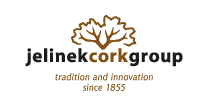Sustainable use practices have garnered attention in recent years as individuals and companies take a more holistic view of sustainability and the environmental impact of their decisions. For decades, we have been thinking in terms of the three R's: "reduce, reuse and recycle." The three R's are a good starting place, but there are a lot of other factors to consider when designing a sustainable building or completing a sustainable remodel. Now is where sustainable use practices come in. While reducing our consumption is a great goal, it isn't always possible, but we can choose sustainable and renewable alternatives!
Sustainable use practices are defined by Transformations Holdings as utilizing natural resources that are not destructive to the environment!
One of the most crucial areas of sustainable use practices for eco-building is finding non-conventional energy sources by using a combination of renewable options. Stalwarts in the renewable energy sector, like solar, wind, geothermal, and hydro energy, have been great options for growing the consumer base of renewable energy. Newer options like tidal and wave energy capturing are also exciting options that could significantly impact dependence on fossil and non-sustainable fuel options. Still, they are only sometimes practical, depending on your location. As we have seen recently in Iceland, they can leave our energy grid vulnerable to damage by the forces of Mother Nature. Other options, such as bioenergy, open the market to locations underserved by the renewable energy market. In Portugal, for example, cork factories have been using cork dust to fuel their plants for the last several decades.
Another thing to consider when trying to incorporate sustainable use practices into your design is to look at the materials you are using. Renewable materials can often be substituted for non-sustainable options. These renewable materials often have more features and benefits than their non-sustainable counterparts, which can even help offset any increased costs.
Renewable resources like wool can be a great alternative for sustainable design to carpets and even some types of insulation! As a natural product, wool is free of harsh chemicals and VOC off-gassing frequently found in processed carpets—and the sheep can even be used in lieu of gas or electric lawnmowers! Wool also has natural properties that help insulate sound and noise while still providing the soft and inviting appearance of a carpet.
Sustainable concretes are available in various options to fit different needs. Ferrock, a popular choice for walkways and pavement, is made of a mix of materials that, when combined, absorb CO2 during the hardening process, helping to scrub CO2 from the atmosphere.
Another type of sustainable concrete is made from a mix of softwood pulp, Portland cement, fly ash, and water. Fiber cement is an excellent choice for siding and roofing products. The cellulose from the softwood pulp helps strengthen the concrete, ensuring it is low-maintenance and longer-lasting than traditional concrete. It even holds up well in high-eroding conditions like wet coastal areas.
Cork is an extremely versatile building material option. It can be used as wall/roof insulation, underlayment, flooring, stucco-like siding, cladding, and decorative applications! Cork comes from the bark of the cork oak tree, which is carefully harvested from the live tree. Once the bark has been harvested, the tree will regrow the bark, creating a 100% renewable and sustainable loop. Cork has many benefits, including thermal and acoustic insulation, impressive longevity, and, when used as flooring and underlayment cushion, which helps to reduce fatigue and pain when standing.
Learn more about cork insulation.
When choosing sustainable wood products, forest management should be considered. Forest management is defined by the US Forestry Service as "Forest management focuses on managing vegetation, restoring ecosystems, reducing hazards, and maintaining forest health." Forest management includes selective harvesting of trees to maintain the ecosystem of the forest and replanting trees after they are harvested.
In softwood forests, forest management consists of keeping a mix of tree types and ages and replanting trees that have been removed. This process helps make the forest more resistant to fires and other natural pests like disease and insects. Hardwood forests take longer to mature, making forest management even more critical. Only a small number of trees can be taken from the same general area each year to maintain forest integrity.
While cork trees are hardwood trees, their forest management is slightly different. Cork bark is removed without felling or harming the tree, allowing for more frequent harvests, but care still needs to be taken to keep the forest as healthy as possible. Cork bark is harvested in a cycle that is typically 9 years long. The bark is harvested in a pattern to ensure a range of bark regeneration, which helps to protect the trees from insects and disease.
Recycled materials should also be considered an option for sustainable building materials. Recycled materials can range from reclaimed wood from previous building projects or furniture to weather-felled trees or processed recycled materials such as recycled glass. Green building takes into consideration the whole system impact of the materials used in the project, meaning long-lasting and durable materials can be more cost-effective in the long run. The LEED certification system can help guide you to which products will be best suited for your project and location!


